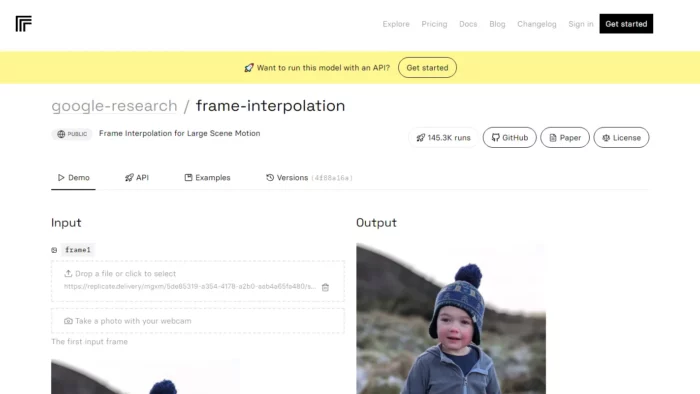The website provides access to a TensorFlow 2 implementation of a high-quality frame interpolation neural network developed by Google Research. This model uses a unified single-network approach without relying on additional pre-trained networks such as optical flow or depth. It achieves state-of-the-art results through a multi-scale feature extractor that shares the same convolution weights across scales. The model is designed to be trained from frame triplets alone. Users can interact with the model via Replicate’s API, allowing them to control the number of times the frame interpolator is invoked and receive the corresponding output schema.
⚡Top 5 Google Research Frame Interpolation Features:
- Unified Single-Network Approach: The model uses a single network without requiring additional pre-trained networks such as optical flow or depth.
- Multi-Scale Feature Extractor: A shared convolution weight system allows for efficient processing across multiple scales.
- Trainable from Frame Triplets Alone: The model can learn directly from sets of three consecutive frames.
- High Quality Results: State-of-the-art performance achieved through the presented methodology.
- TensorFlow 2 Implementation: The model is implemented using TensorFlow 2, making it accessible and compatible with various applications.
⚡Top 5 Google Research Frame Interpolation Use Cases:
- Video Enhancement: Improve the visual quality of low-quality videos by interpolating missing frames.
- Animation Production: Generate intermediate frames between keyframes to create smooth animations.
- Real-Time Video Processing: Apply the interpolation technique to real-time video streams for improved visual experience.
- Virtual Reality Applications: Enhance VR experiences by generating more frames for smoother motion.
- Medical Imaging Analysis: Utilize the interpolation algorithm to analyze medical images with higher resolution and accuracy.














